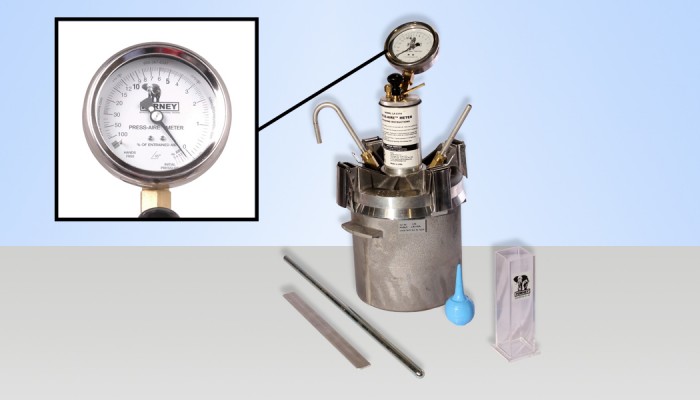Air Entrainment
There trapped air in the concrete reduces the strength of concrete and increase its permeability. Each 1% of the air, decreases about 5.5% strength of the concrete. Also, with increased permeability, water will penetrate into the concrete, and caused by freezing increased volume and destroying the concrete. Cycles of freezing and melting is an important factor in the destruction of concrete and reduce its durability.
On the other hand these tests have shown that the creation of intentional and non-continuous tiny bubbles in the concrete reduces the damage, caused by cycles of freezing and melting. Because of the destructive effects of freezing and melting due to water expansion during freezing, it is reasonable to assume that if excess water could easily be transferred to adjacent pore full of excess air it will not cause to damage the concrete. By pressure resulting increased volume of water can be adjusted by air bubbles, this is the foundation of creates air bubbles in the concrete.
To withstand freezing and melting of concrete resistant, Water-Cement ratio should not be higher than 0.5 In the case of thin sections of the slab bridges and sidewalk blocks, a ratio is limited to 0.45. The Press-Aire Meter™ (Air Meter) measures entrained air in fresh mix concrete by observing the volume change resulting from the application of pressure.
|
Standards:
|
ASTM C231, BS EN 12350-7
|
|
TYPE B Air Entrainment Meter
|
SMCO-1210
|
|
Dimension:
|
70×35×38 Cm (L×W×H)
|
|
Weight:
|
14.5 Kg
|
|
Material:
|
Aluminum
|
|
Accessories:
|
syringe, tamping rod, strike-off bar, calibration vessel,
inside and outside tubes, and, of course, instructions
and sturdy orange carrying case
|
The new-style case stores the top and bottom portions of the air meter separately. It has integral handles for easy handling.The blaze-orange color helps you locate the meter quickly from a distance.







